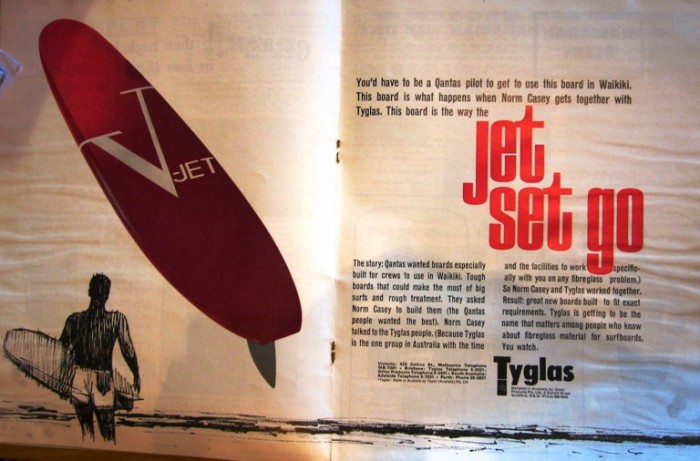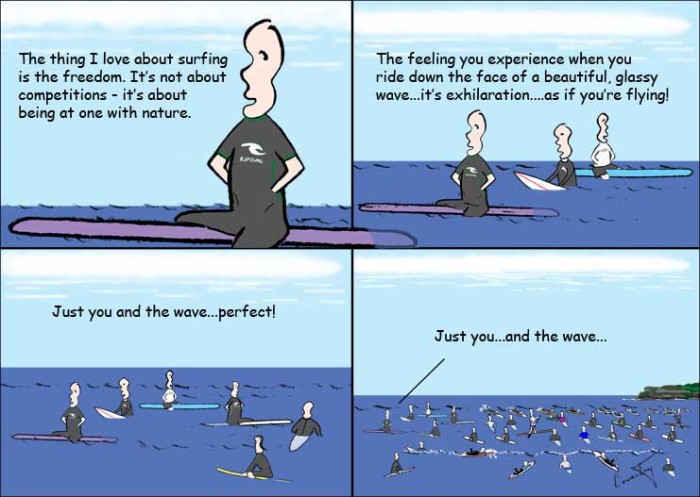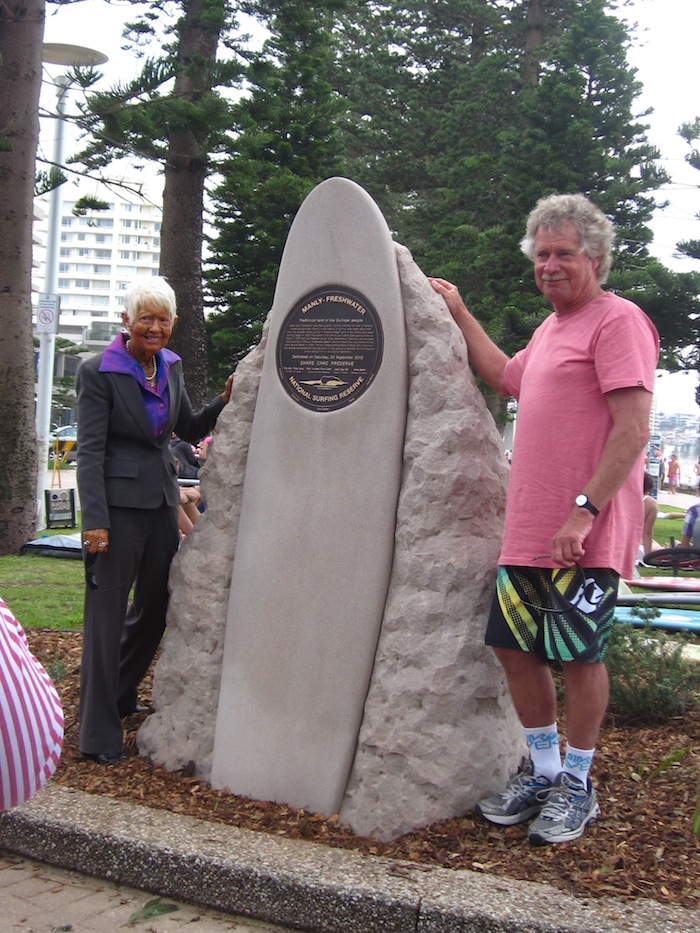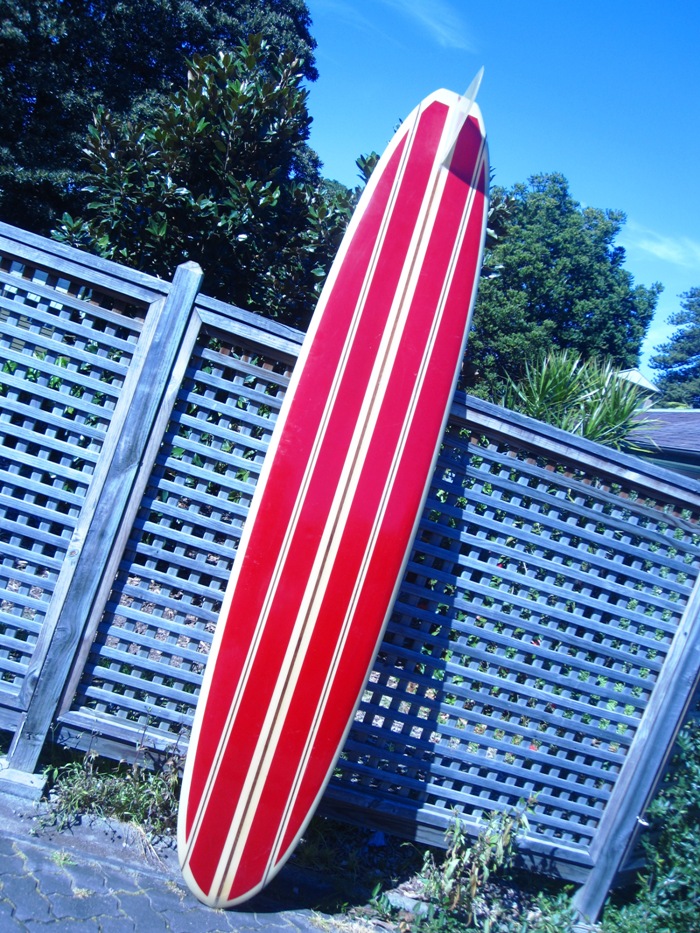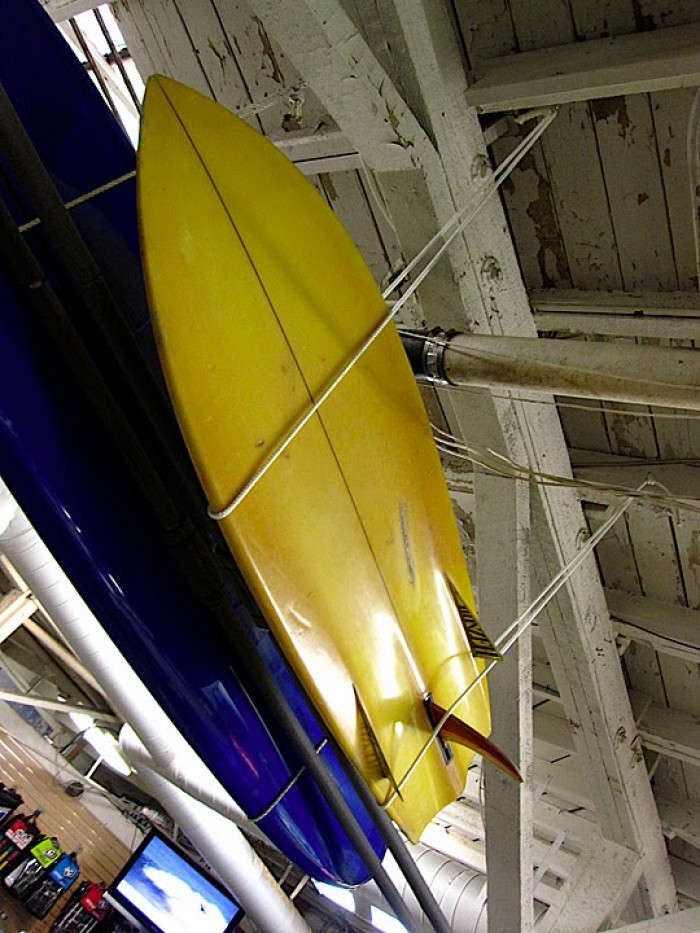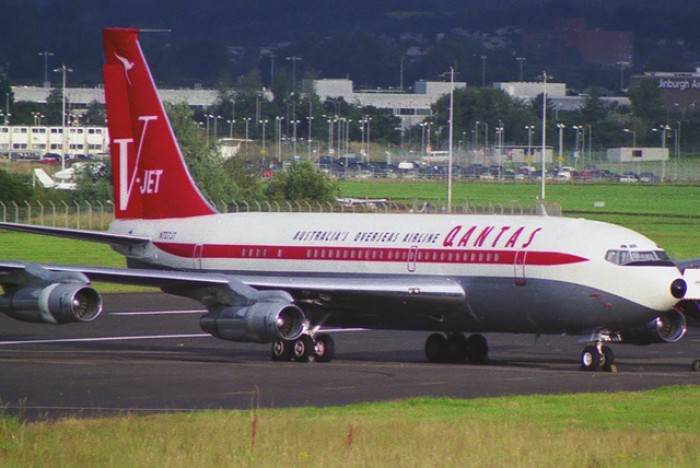
Boeing 707-138B image from here
Continuing with the story of the V-Jet surfboard Steve Core writes…
In the sixties, South-side surfboard manufacturer Norm Casey had a second job as an International Qantas Flight Steward – or Flight Attendants as they’re known these days.
In a partnership with his employer Qantas, Norm created the V-Jet Surfboards for the exclusive use of flight crews on lay-over in Hawaii.
Qantas crews stayed at the Ilikai Hotel. That’s the one that Jack Lord stands atop of in the opening sequence of Hawaii Five-O.
Qantas crew had a 28-year run ‘in residence’ at the Ilikai using it as a crew hotel. It is directly in front of the famous Ala Moana surf break and entrance to the yacht harbour and the surf break called Kaisers.
Qantas had a ‘recreational club’ where for a small weekly contribution of around twenty five cents a week, flight crew were provided a rec-room with push-bikes, tennis racquets, boogey boards, a Hobie cat, etc – for use by all crew in most lay over ports.
Hence the V-Jet board was built especially for use by crew in Hawaii – as the Ilikai Hotel was the only Hotel we stayed at that had surf directly in front of it.
Between July and September 1959, ahead of every other airline outside the US, Qantas took delivery of seven Boeing 707-138 jet aircraft. Boeing 707 services to the United States began in July. Two months later the service was extended to London via New York. Sydney-London services via India began in October.
So great were its advantages that Qantas modified its existing 707-138 fleet with the turbo-fans. With the arrival of its first 138B series aircraft, Qantas called its Boeings V-Jets, from the Latin ‘vannus’, meaning fan. Two more were ordered in 1963.
Steve Core is an ex-Qantas Long Haul Flight attendant, ex-Norm Casey employee and Sydney based film-maker and photographer. Find out more about Steve here.



